To celebrate the start of the monsoon, it’s fish season at CNE!
Cambodia, a land of water is home to hundreds of fish species, many of which are now under threat from humans.
Whether you are keen with a rod and reel, an aquaist who wants to know what is in a tank, a fan of fishy dishes or someone who really doesn’t give a carp about what lies beneath the surface, we plan to bring an informative article on around 100 species of fish found in Cambodian rivers.
From the minnows to the mega, tasty to toxic, here are the first on the list, in no particular order.
The giant snakehead or giant mudfish (Channa micropeltes)
Khmer; Chhdor, Diep, Riel, is among the largest species in the family Channidae, capable of growing to 1.5 m in length and a weight of 20 kg.
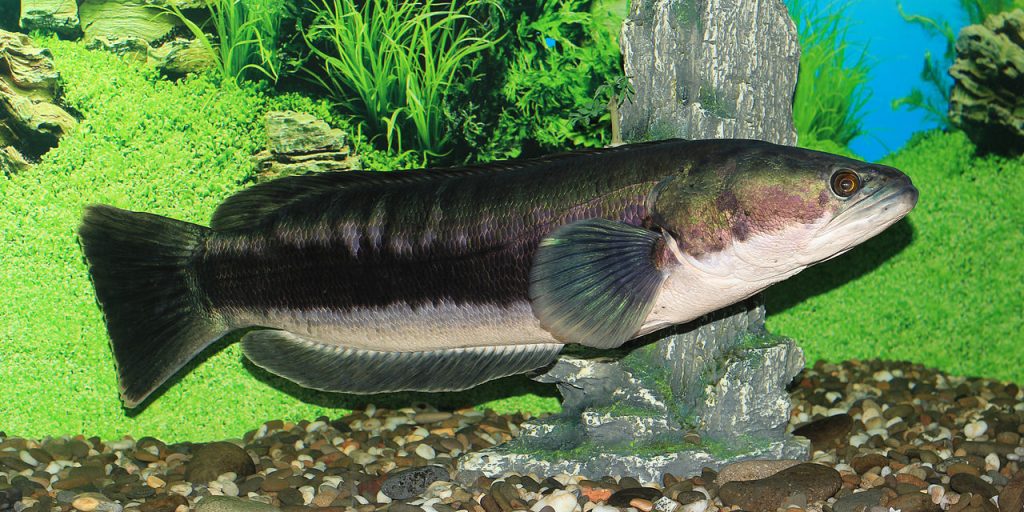
The species has the ability to crawl onto land and breathe air, although they are only able to do this in muddy or swampy areas, hence the nickname “mudfish”.
Its ability to breathe air using a primitive lung located just behind the gills allows it to survive in stagnant water where oxygen levels are low, by coming to the surface and taking a small gulp of air. It also enables the snakehead to travel short distances on land, although it is unable to hunt while on land, as it cannot support itself at all with its small fins in comparison to its large body.
The young of the giant snakehead are red in color, with orange and black lateral stripes appearing after about two months. As the giant snakehead matures, it loses its stripes and redness, and instead develops a bluish-black and white pattern on its upper body. Juveniles sold in the aquarium fish trade are commonly called “red snakeheads”.

A popular sports fish, they are renowned for putting up a strong fight when hooked, and are also popular across Asia as food.
In various Asian cultures, eating this fish is believed to help in healing of the body, for example, after surgery or severe cuts and scrapes.
The black snakehead (Channa melasoma) reaches a length of 30 cm.

This commercially important species reaches a length of 30 cm (12 in).[2The Black Snakehead inhabits large to medium rivers that consists of acidic water and submerged roots. The Black Snakehead feeds on small and have long, slender bodies with long dorsal and butt-centric balances. They have an extensive mouth and distending jaw with canine-like teeth.
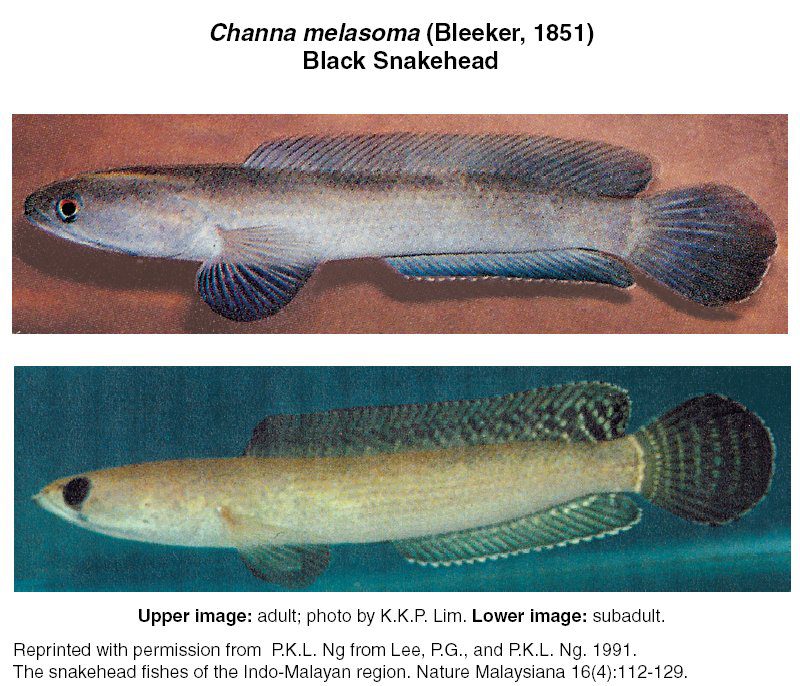
The forest snakehead (Channa lucius), Khmer; kanh chon chey.
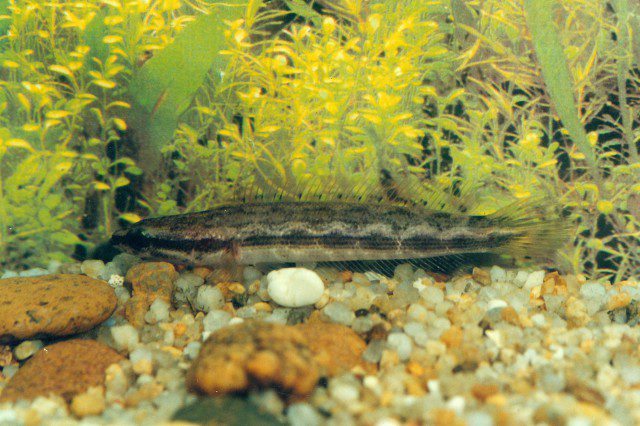
This fish, found in slow moving water with plenty of vegetation cover, grows up to about 40 cm long.
It has a distinct series of port-hole markings on the side and has a more tapering head compared to other snakeheads. Juveniles are pale and have three lateral stripes from head to tail.
A common fish and also popular as food.
Channa marulius (bullseye snakehead or great snakehead) is a large species of snakehead.
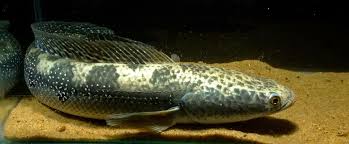

A very fast growing and aggressive fish. Bullseye snakeheads can reach almost 2 metres in length and weigh up to 30 kg.
Adults occur in sluggish or standing water in canals, lakes, and swamps with submerged aquatic vegetation, but usually only in deep pools in rivers and occasionally in lakes.
Their ability to breathe air allows them to travel across open ground and shallow waters.
Eat fish, frogs, snakes, insects, earthworms and tadpoles, but there are reports of this species taking water birds, snakes, and rodents. Males are territorial and bit when caught.
Considered a great catch for sports fishermen and also a delicacy.
The dwarf snakehead, (Channa gachua)is a native to freshwater habitats in southern Asia, where it has a wide distribution from Iraq to Indonesia.
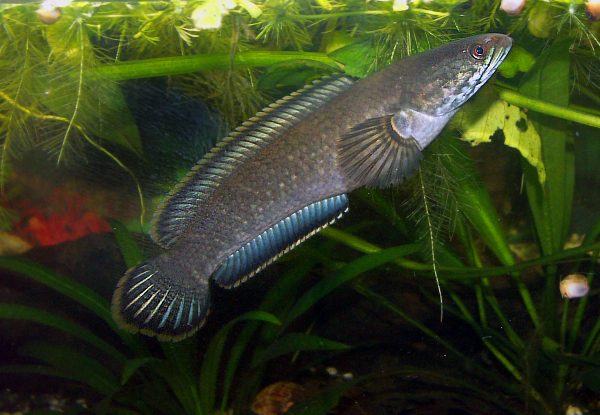
This species can reach 28 cm in total length, but most are much smaller. It feeds on small fish, insects, and crustaceans. It is another mouthbrooder, with the male brooding the eggs and juveniles in his mouth. Males have more-extended fins than females, and develop more intense color patterns.
The striped snakehead, (Channa striata), Khmer: trey ross, is another species of snakehead.
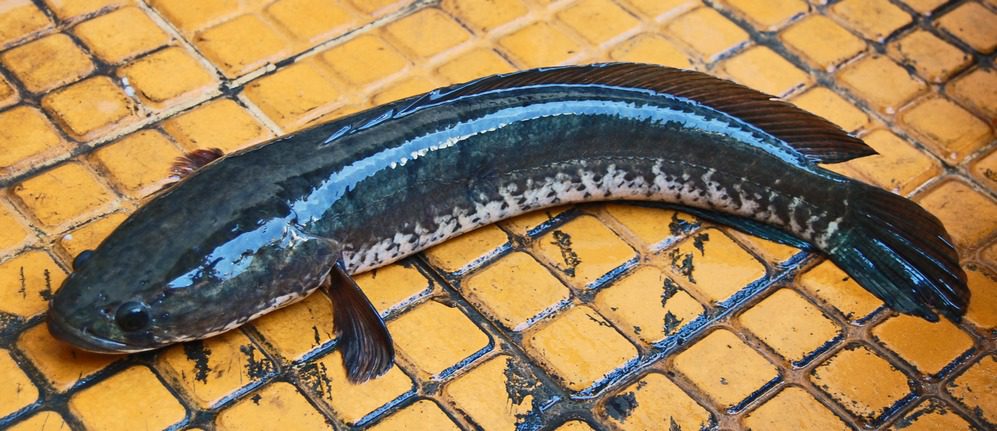
A common site at wet fish markets, often sold alive. Also served up grilled as street food.
This fish can grow up to a metre long, but rarely gets the chance due to being a popular meal.
Like other snakeheads, the striped lives on floodplains and rice fields during the wet season and burrows down into the mud during the dry.
They are extremely aggressive, especially during the breeding season. Easily caught by small kids with bamboo rods, string and a hook.
Catfish
Trey kaok (Cephalocassis borneensis) (common name unknown in English )is a commonly eaten catfish found in rivers from coastal areas up to the Laos border.

Growing up to around 30 cm, they are sold fresh in fish markets in Cambodia. The male of the species carries eggs in his moth until they hatch, so should be called ‘Who’s the Daddy? fish’.
Olive flathead-gudgeon (Butis amboinensis)
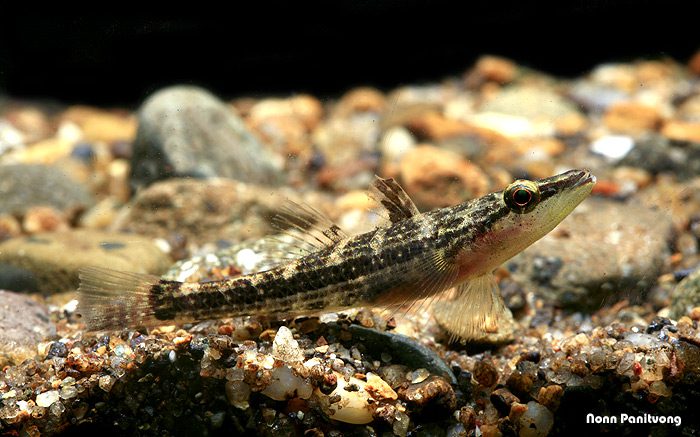
A mangrove fish growing up to 14 cm, they can be found around coastal brackish waters, creeks and streams and occasionally further up rivers. Survive on small crustaceans and other fish they hunt between mangrove rots at night.
A slightly larger species is the strangely named crazy fish (butis butis).
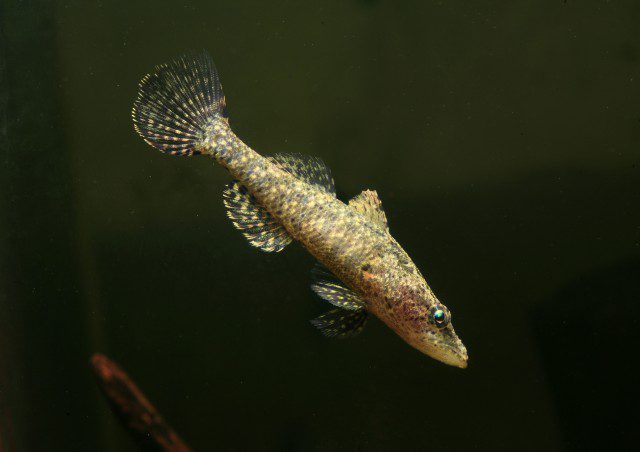
Growing a few cm longer than the olive gudgeon, it has a similar habitat and diet. A common fish on tidal rivers. The species is well spread across the tropics from East Africa to Australia.
They are known for their ‘crazy’ behavior of aligning their bodies against the nearest surface, appearing horizontal, vertical, and even upside down (they are also called the ‘upside down sleeper’. They use this positioning to ambush prey.
They also have the ability to change colors to a limited extent to blend in with their environments.
Scaleless worm goby (Caragobius urolepis)

A weird looking estuary and tidal river dweller, believed to swim out to sea, possibly to breed. Grows up to 8.5 cm. Really reminds me of something, but can’t quite put my finger on what that is.
Puffer Fish
Another throw back to days of the sea are Cambodian freshwater puffer fish, Khmer: Trey Kampot.
Somphong’s puffer, redeye puffer or crested puffer (Carinotetraodon lorteti) is a small freshwater blowfish found in Thailand, Cambodia and Vietnam. This fish has been collected in the past for the aquarium trade.
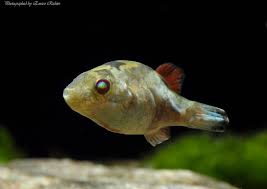
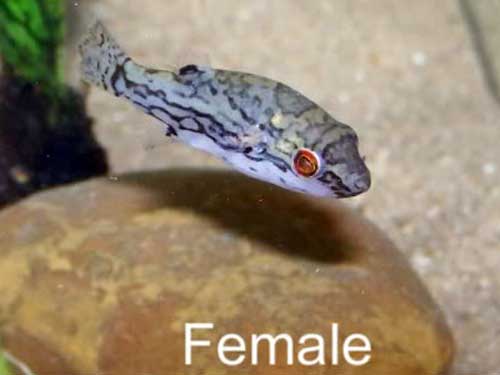
This species is often found in canal and brackish water along the coast of Southeast Asia. The male has a red body with red eyes like ruby and is significantly larger than the female. Males and females appear so different they are often confused as separate species. The size when matured is about 7 cm.
Dichotomyctere ocellatus (or Tetraodon biocellatus), commonly the figure 8 puffer or eyespot puffer, is found in the lower Mekong and tributaries.

Figure 8 puffers grow to about 8 cm (3.1 in) long.[3] They are colourful fish, with greenish yellow patterns on their backs. These patterns vary greatly from fish to fish, but the markings either side of the caudal fin resemble the number eight, or eye-spots (earning the species another common name as ‘Eye-spot puffer’).
These are one of the only fish species that live exclusively in freshwater, but can regulate their bodies to survive in saltwater, probably a evolutionary throwback.
They also pack a nasty bite from their beak, and have been blamed for emasculating local fishermen, as shown by creepy fishing expert Jeremy Wade in a River Monsters episode ‘Mekong Mutilator’.
The giant barb, Siamese giant carp, (Catlocarpio siamensis) is the largest carp species in the world.
Populations have declined drastically due to habitat loss and overfishing, and the giant barb is now considered critically endangered.
It may reach 3 m and weigh up to 300 kg, but no individual weighing more than 150 kg has been caught in Cambodia since 1994. Today, the maximum length is about 1.8 m.
Today, few barbs live to maturity. The main threats are from habitat loss from pollution and dams, as well as overfishing.The sharp population decline is well illustrated by catch data from Cambodia, where 200 tonnes of giant barbs were caught in 1964. By 1980, only about 50 fish were caught, and by 2000, only 10.
In a 2005 royal decree, the Kingdom of Cambodia designated this fauna as the national fish to bring conservation awareness to this species.
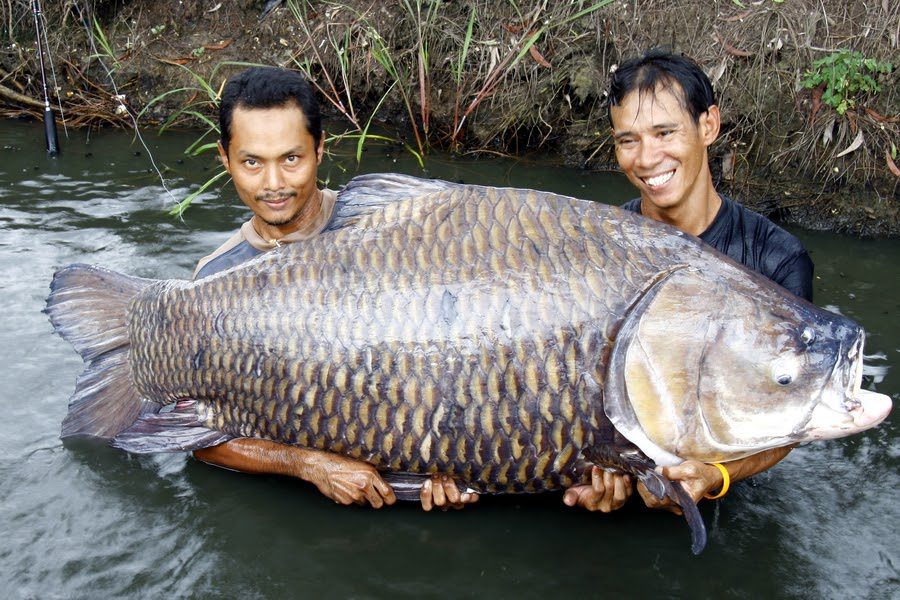
Barbs
The Red-tailed Tinfoil Barb or (Barbonymus Altus) is one of the smaller carp species found in the region and is widely distributed throughout the Mekong and Chaophraya basins in Laos, Cambodia and Vietnam.
Known in Khmer as trey kahe, trey kahe khor horm and trey kaho.
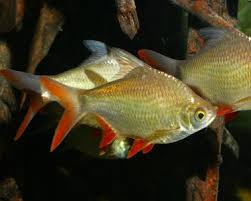
Red-tailed Tinfoil Barb inhabit most large rivers in Cambodia and swim out into flood plains and riverside rice fields in the rainy season.
This fish has a flat streamlined body covered in minute silver to gold coloured scaling with red to orange fins and tail.
The Red tailed Tinfoil Barb feeds on a mixed and varied diet of small fish, invertebrates, plant matter, organic detritus and algae.
The Red Tailed Tinfoil Barb reaches a maximum length of 20 cm and can be caught on light fishing tackle from various rivers throughout the country. It is also a popular aquarium fish.
The Java or silver barb (Barbonymus gonionotus), trey chpin in Khmer, is a species of ray-finned fish that are also common in aquaculture.
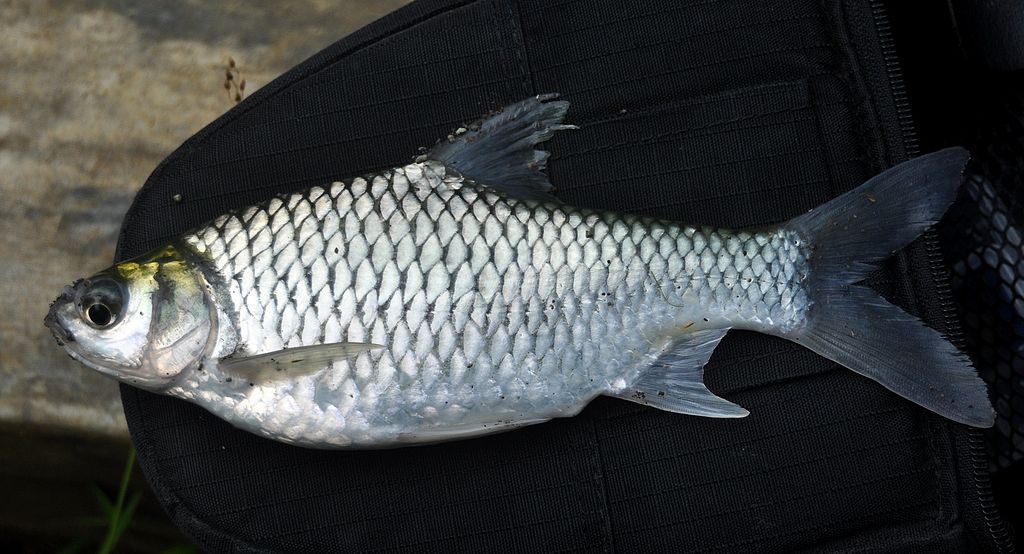
This fish can grow up to 40 cm and is mostly found in still water or the bottom middle of larger rivers. Due to the popularity as a fish farm species, it is often found on the dinner table across Southeast Asia.
The tinfoil barb (Barbonymus schwanenfeldii) is like a cross between the above two fish.
It is distinguishable from other similar species by a red dorsal fin with a black blotch at the tip, red pectoral, pelvic and anal fins, red caudal fin with white margin and a black submarginal stripe along each lobe. Large individuals are silvery or golden yellow while alive with its dorsal fin red and caudal fin orange or blood-red. It grows up to 35 cm in length. It is another popular aquarium fish.
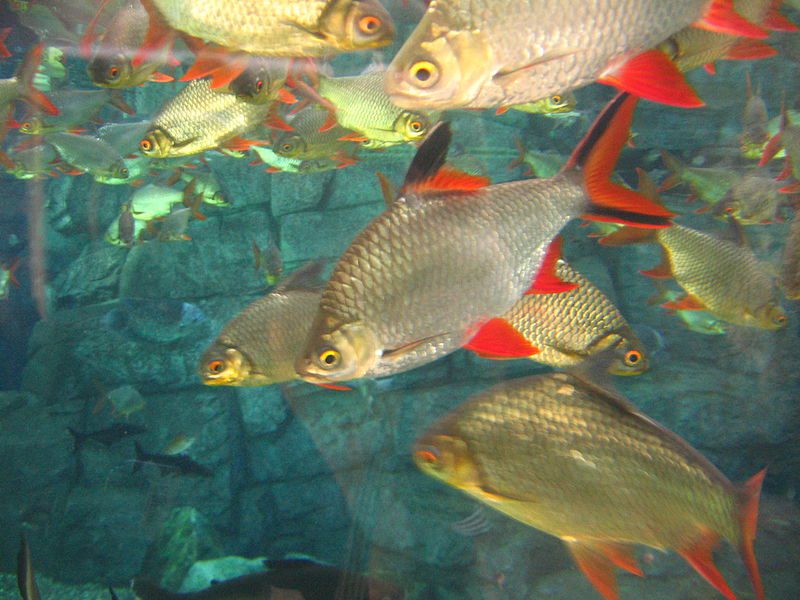
The hampala barb (Hampala macrolepidota) is a relatively large southeast Asian species of cyprinid from the Mekong and Chao Phraya basins. It prefers running rivers and streams, but can be seen in most freshwater habitats except torrents, small creeks and shallow swamps. This predatory species reaches up to 70 cm (2.3 ft) in length and it is common at half that size.
Although a traditional food fish, it is still common in Cambodia.
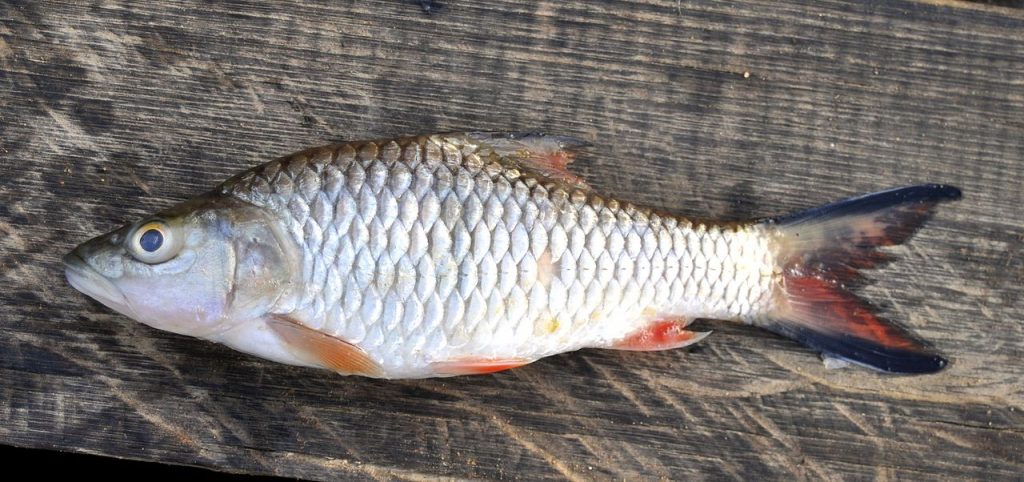
The beardless barb (Cyclocheilichthys apogon) is a very common species of freshwater fish in the family Cyprinidae, and widespread in Southeast Asia. It grows to 25 cm.
Beardless barb inhabits a range of freshwater environments: rivers, lowland swamps, marshlands (in flooding time), lakes, and reservoirs. It is a migratory species that enters flooded areas during the high-water season.
Sometimes farmed as food.

Tor tambroides These fish have been found throughout Southeast Asia, ranging from Thailand in the Chao Phraya and Mekong River basins.
The species is omnivorous, sometimes eating toxic fruits when the streams it inhabits flood the forest; this may make them temporarily inedible. During the rainy season, juveniles migrate downstream. After 2 months, matured adults travel back upstream to spawn at the headwaters in the dry season.
In Malaysia the species is prized as a delicacy, and one of the most expensive fresh water fish at markets.
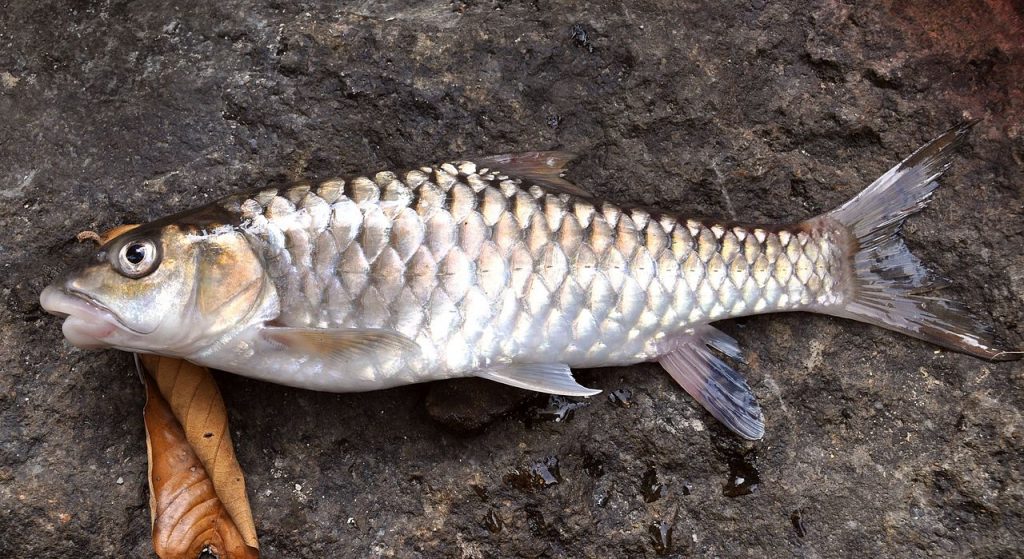
Amblyrhynchichthys truncatus is a species of cyprinid native to Southeast Asia. Males have a typical length of 30 cm, and a maximum length of 40 cm.
Found mainly in rivers and flooded fields. Juveniles are caught in October in the lower Mekong basin. Small individuals are used for prahoc, larger ones are marketed fresh.
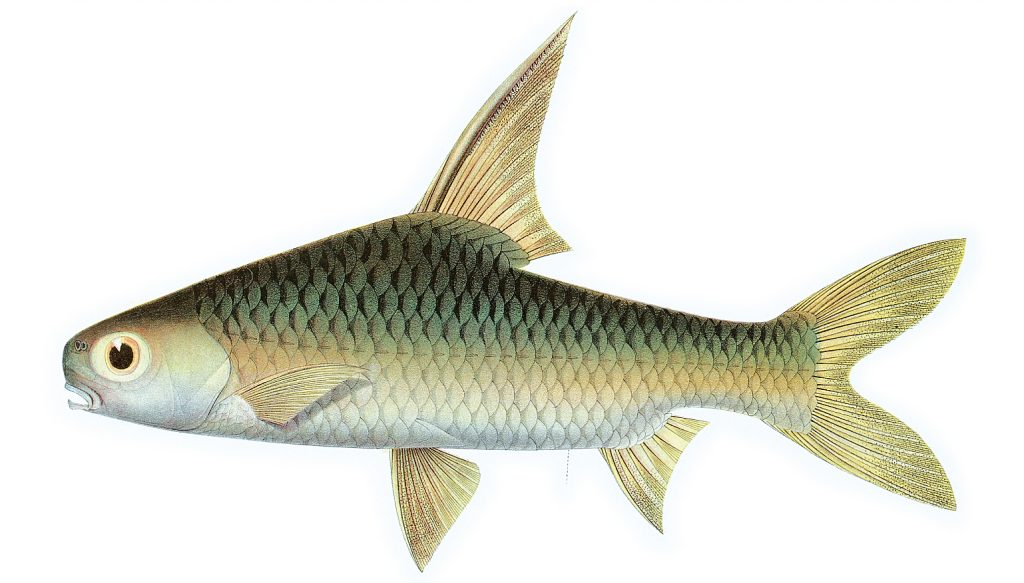
Osteochilus microcephalus is found in the Mekong River basin and inhabits lowland freshwater wetlands, canals, and other artificial habitats, and also moves into flooded forests, grasslands, and fields. It is locally common and fished in small-scale fisheries. It grows to 24 cm in length.
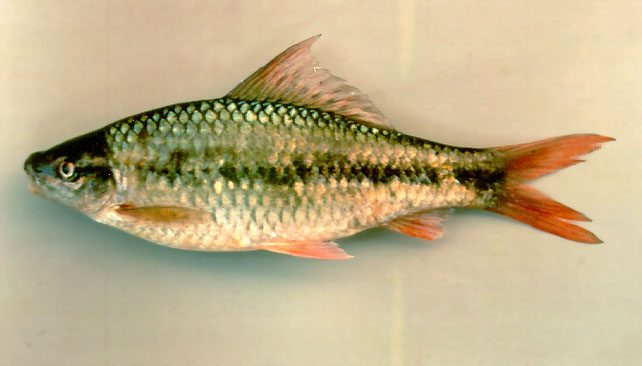
Osteochilus waandersii or Waanders’s hard-lipped barb is a cyprinid freshwater fish found throughout Indochina (including the lower Mekong River and Chao Phraya River) as well as in Sumatra and Borneo. .
It inhabits submontane streams to highland waterfalls. It is migratory in larger river systems. It can move into flooded forests adjacent to upland streams. They grow to around 20.5 cm, are sold in the aquarium trade and are commercially raised.
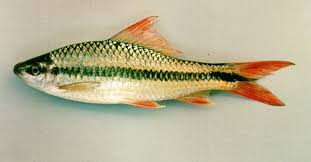
Crossocheilus atrillimes or Siamese Algae Eater inhabits flowing streams and tributaries with substrates of boulders, pebbles, gravel and sand, often in areas with submerged driftwood or tree roots. It is thought to undergo seasonal migrations during which it can be found in deeper, more turbid water. They grow to around 7 cm and are popular aquarium fish.
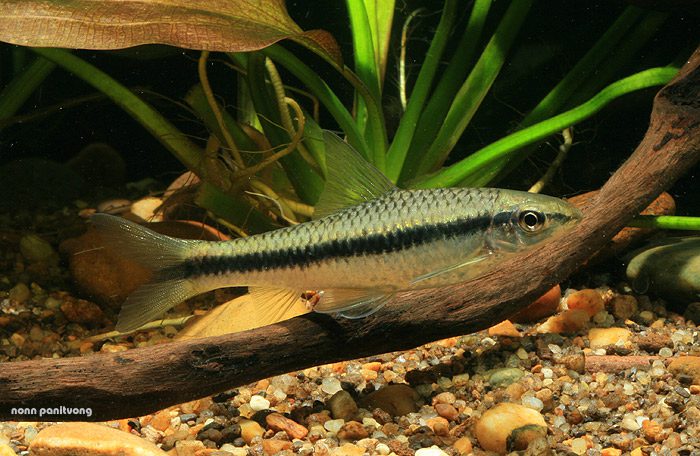
Belodontichthys, or Trey klang hay
There are two species of this fish found in the lower Mekong area and
grows up to about 100.0 cm is found in medium to large-sized rivers from middle depths to the surface in deeper parts. This species feeds on smaller fish near the surface. It is an excellent game fish and caught with hook and line. Sadly large numbers are being taken near Stung Treng by using explosives ‘dynamite’ fishing. It is often found in markets sold fresh or dried and salted

B. truncatus is smaller, growing up to 60.0 cm. upstream through the Khone Falls (Laos/Cambodia border) from June to July and enters the flooded forest in July to October, where it feeds on smaller fish.

Both these fish have some serious teeth business going on, so caution should be taken if one jumps on your hook.
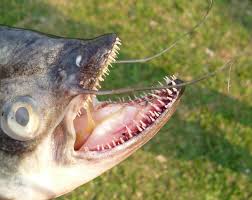
Betta or bettas” (Osphronemidae) are a large family of small fish common in the area. The best known Betta species is B. splendens, commonly known as the Siamese fighting fish (below).
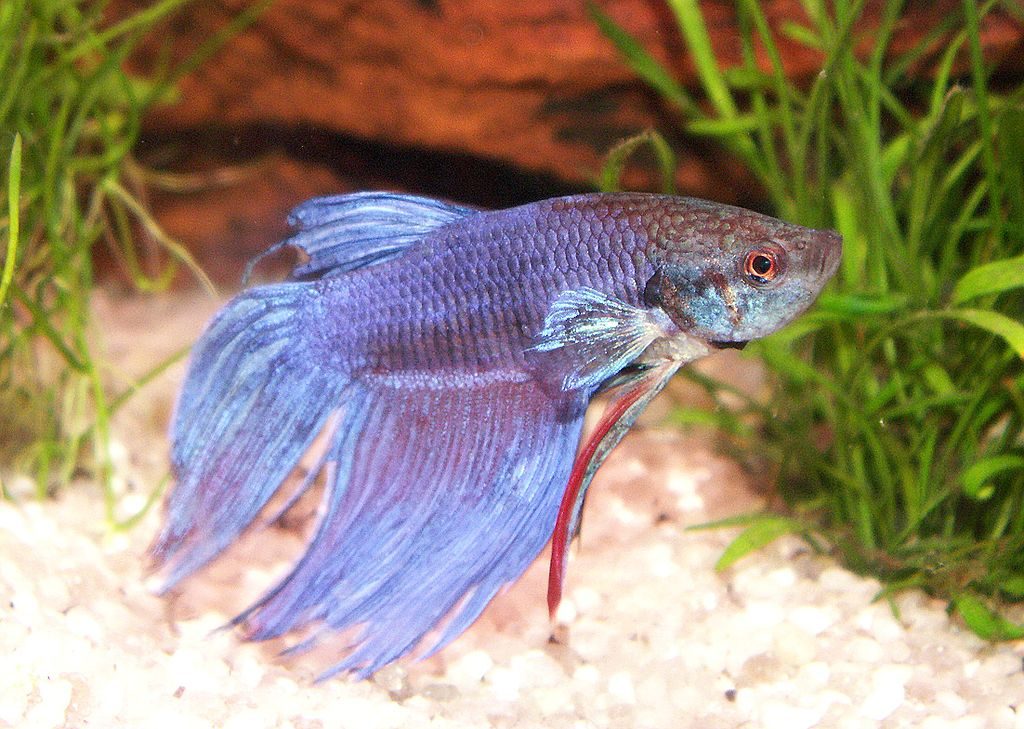
Bettas are anabantoids, which means they can breathe atmospheric air using a unique organ called the labyrinth. Because of this they have the ability to thrive in low-oxygen water conditions that would kill most other fish, such as rice paddies, slow-moving streams, drainage ditches, and large puddles. Fighting fish can often be seen in kept murky small bowls in Cambodian shops and restaurants.
Wild Betta fish are hardy and eat almost any animal small enough, including worms, insect larvae and smaller fish. Their natural environment is often resource-limited, so many Betta species have little choice of food.
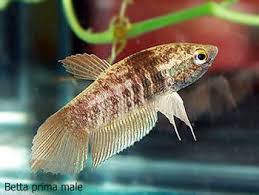
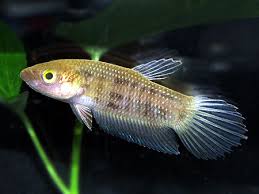
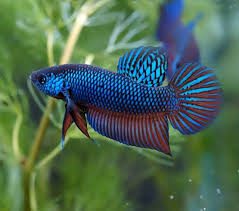
Boesemania microlepis or the croaker, Trey pama/prama.
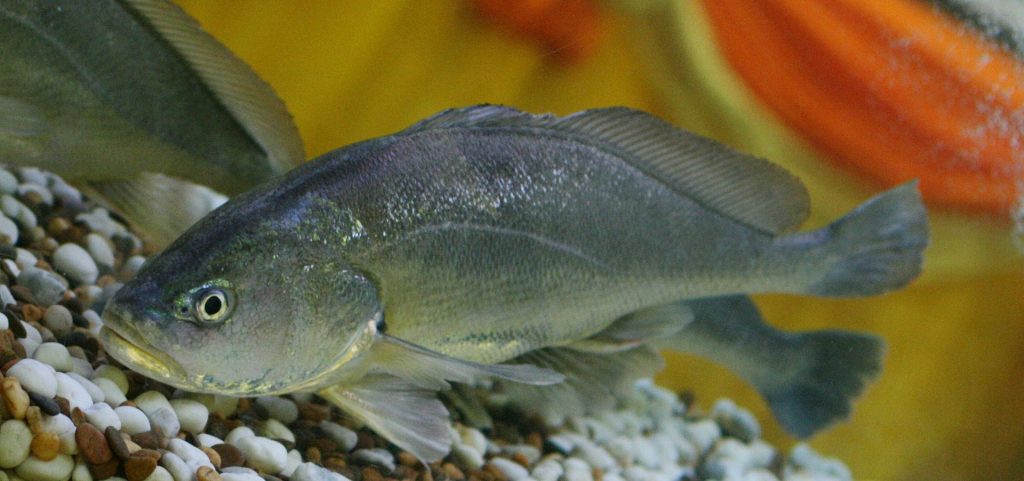
This is a relatively large species, reaching up to 1 m and 18 kg in weight.
This species appears to be sedentary. It prefers large, flowing rivers. During the peak of the dry season, it spawns in deep water pools. During this time, common to other croakers, it can be heard to make loud, continuous, croaking sound.
Boesemania microlepis eats mostly small fishes and crustaceans such as shrimps.[
A popular and somewhat expensive delicacy in southern Laos and northeast Cambodia, this species has become increasingly threatened due to over-fishing. Despite this, it remains common in much of its range.
Boleophthalmus boddarti, aka Boddart’s goggle-eyed goby are a species of mudskipper with, well, goggle eyes.
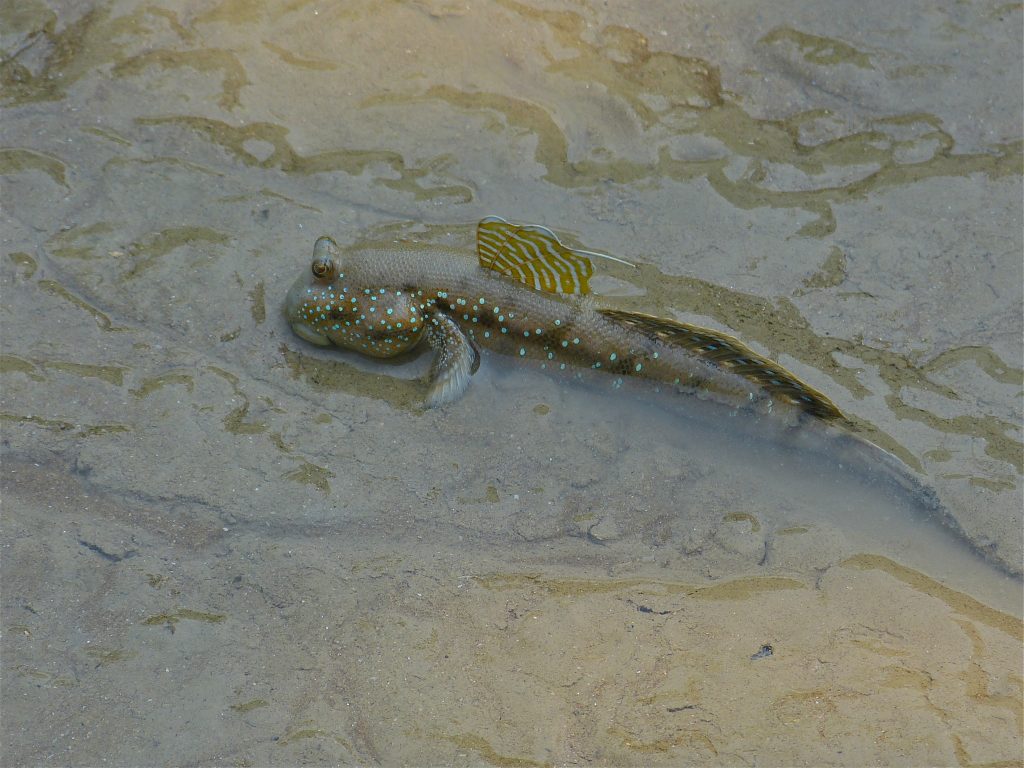
Found in brackish waters , tidal rivers and estuaries, these odd looking fish live in mud burrows, and can be seen at low tide skipping about in the mud. Plenty can be seen at low tide around Teuk Chou near Kampot.
Soles
*Geography bit: Until relatively recently Cambodia was under a shallow marshy sea that stretched southwards roughly from the Tonle Sap lake. Sediment washed all the way from the Himalayas with the Mekong, slowly silting up the land we see today, There are still brackish ‘salt’ lakes found inland, such as Phum Ou Krang Ambel on National Road 4 near Kampong Speu.
This slow change from sea to freshwater has led to the evolution of some interesting fish species, including flatfish.
Brachirus harmandi, or freshwater sole, Khmer: Trey andat chhke, is a freshwater flatfish found in the Tonle Sap and Mekong basin.

A bottom dwelling fish, it prefers large fast rivers with a sandy bed and grows around 10 cm in length. Is sometimes found in mixed catches and can be eaten.
Brachirus panoides, the false freshwater sole, Khmer: Trey andat chhke veng, is a larger species of sole, growing to around 20 cm. Found in the lower courses of large rivers and estuaries, also stays at the bottom and can be eaten.
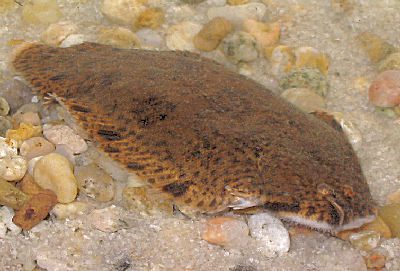
Mekong freshwater stingray, Hemitrygon laosensis, is a species of stingray restricted to the Mekong and Chao Phraya Rivers. Measuring up to 62 cm, a characteristic feature of this species is its bright orange underside.
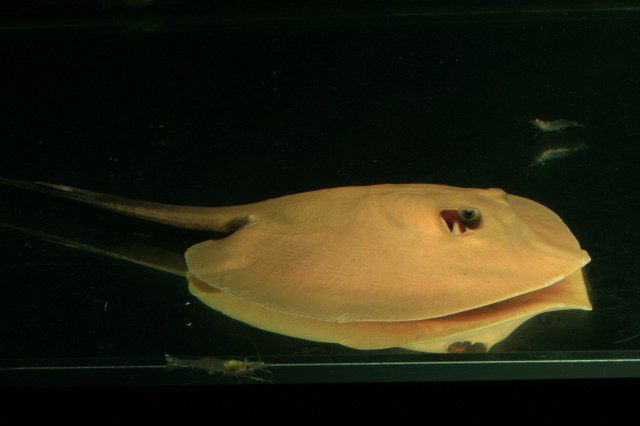
The Mekong freshwater stingray preys on invertebrates and has been assessed as Endangered by the International Union for Conservation of Nature (IUCN), as it is threatened by over fishing and habitat degradation.
The giant freshwater stingray (Urogymnus polylepis) is one of the largest fish in the world, with specimens documented at 2 m across and weighing more than 600 kg.

Females give birth to 1-4 young ‘pups’, which feed on a type of fish milk. The sting is covered in a toxic mucus and capable of breaking human bones, although the fish is not aggressive.
A very reclusive bottom dweller, over fishing and habitat loss (especially the destructive sand dredging) has made this once common river monster an endangered species with losses of up to 95% in area over the past few decades.
The fish is hunted for meat, aquarium displays and sport fishermen, but at over half a ton and with a habit of burying itself into the mud when caught, it’s a hard catch to land. Watch Jeremy Wade have a go.

Khmer names for all would be good, in roman and Khmer script.